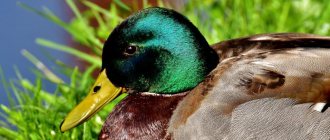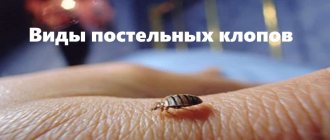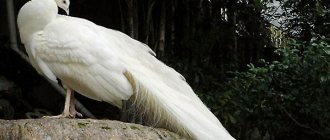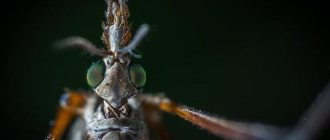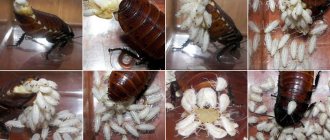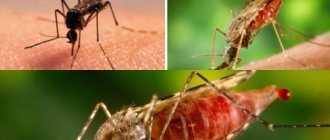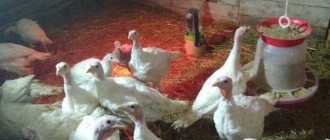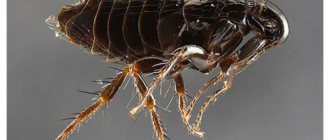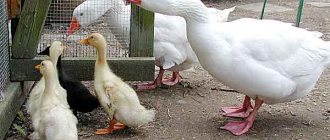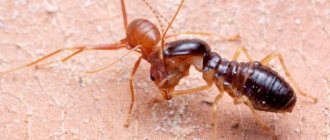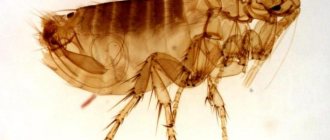- home
- Birds
- Are female peacocks or males more spectacular and beautiful?
Many people wonder whether female or male peacocks are more beautiful? There is probably not a person on Earth who does not know about the existence of peacocks, despite the fact that their natural habitat is only India and nearby countries. Many consider them the most beautiful birds. This fame for peacocks is secured by their magnificent tail, long greenish feathers with large spots at the ends in the form of a bright eye. To whom - female or male - does this miracle belong, which has so adorned the representatives of the pheasant family? And which of them - females or male peacocks - is more beautiful?
There is probably no person on Earth who does not know about the existence of peacocks
Female and male peacocks
What do peacocks look like? There are peacocks of different colors, even white, but it is better to describe what Indian peacocks look like, the most common species. The peacock is a typical male from the line of those who conquer the female with the beauty of his plumage.
And it’s really fantastic:
- on the head, chest and neck - bright blue feathers;
- on the back - green;
- the bottom of the body is black;
- the ends of the wings are red.
The graceful long neck ends in a small head, decorated with a crest resembling a crown. But his main pride is his fan-shaped tail, which he can fold and then spread, especially when he wants to impress a female. It is not the tail itself, but the feathers growing above the tail, which serve as their support. The length of the tail is about 0.5 m, and the rump is much longer - up to 1.5 m.
Many consider them the most beautiful birds. This fame for peacocks is secured by their magnificent tail, long greenish feathers with large spots at the ends in the form of a bright eye
The female peacock, or, as she is also called, peahen, looks much more modest, is smaller in size, has brown and brownish plumage, and may have a blue-green color in the neck area, but not in all individuals. The tuft on her head is also brown. This has a logical explanation: the main task of the peahen is to breed offspring, and while sitting on the nest, it is much safer to have an inconspicuous color, merging with the surrounding landscape. Yes, she cannot be called completely ugly - large, expressive eyes, sedate gait. It is interesting that the peacock, like the peahen, has brown-gray feathers until the age of 1.5 years, and then the color changes and reaches full beauty by about 3 years, when the male is already fully mature for reproduction.
Perhaps such a beautiful bird also has an angelic voice? The voice of peacocks is rather unpleasant and resembles the cry of a cat. It is curious that they especially like to scream on the eve of rain.
In nature, everything is harmonious, and the mating behavior of peacocks is quite naturally determined by the bright attire of the males. In rare cases, males fight to drive away a competitor, while the female watches. But the main action begins later. The male walks around his chosen one with his tail outstretched, showing off and trying to lure her with his incomparable appearance. It's not limited to just one show. Slightly tilting his feathers forward and lowering his wings, he vibrates his whole body so that the feathers of the upper tail rustle, from time to time spreading them on the ground like a carpet.
The voice of peacocks is rather unpleasant and resembles the cry of a cat
If the female shows reciprocal interest, then the suitor immediately turns away, as if ignoring her and showing the back, faded part of the feathers. Soon he turns around again, shaking his tail. This continues several times, and the female accepts the “game” until the peacock and peahen finally come together. It is not that simple. In fact, the spectacular component of his appearance is not very important for a female. It only ensures that the male does not go unnoticed in the tall grass. But from the back, she assesses his age and state of health. Peacocks practice polygamy; one female lays an average of 5-7 eggs.
User comments
After the end of the mating period, the male sheds his “train”, numbering up to 200 feathers. Previously, they were picked up by residents of surrounding villages and sold to Europe, but now this trade is prohibited in order to avoid uncontrolled extermination. By the beginning of the new mating season, by April, the rump grows back.
Peacock or peahen - which is correct
The question of what a female peacock is called is perplexing for many. The answer options are very different - hen, hen, peacock.
However, the correct name for a peacock girl is peahen. This is a scientific and everyday term.
It is quite easy to distinguish a peahen from a peacock. It has a more modest coloration and does not grow long tail feathers. However, it cannot be called gray and inconspicuous. The color of the plumage depends on the species and color subspecies (the common peacock has more than one hundred and fifty artificially bred colors). The main task of a peacock girl is to hatch eggs and hatch chicks, which means the catchy coloring will attract attention and become noticeable against the background of the bushes.
The peacock has variegated colors to attract the attention of its partner.
Gallery: peacocks (25 photos)
Content Features
Peacocks are often bred to decorate plots and estates . They are quite easy to maintain and do not require special care. Birds quickly become attached to humans, recognize the owner and do not fly away from their place of residence. However, the enclosure must be spacious so that the large family can move freely, and the male cannot damage his magnificent tail feathers. You will need enough space to walk.
As a rule, a family consists of three females and one male, but it happens that in captivity he prefers one of the peahens, leaving the rest without attention. This situation is impossible in the natural environment.
In order for a bird to reproduce safely in captivity , it is necessary to organize certain conditions:
- first of all, it is complete and high-quality nutrition;
- do not form a pair of closely related individuals, otherwise there will be no offspring;
- In its natural environment, a peahen is an excellent mother, but sometimes in an enclosure she forgets about her responsibilities and refuses to care for the chicks. But if she sat down to hatch, then up to 12 more eggs can be placed under her;
- if the female continues to care for the offspring, then she will need good conditions and help, since the chicks are quite demanding in terms of care;
- if the female does not want to sit, then the eggs are placed under turkeys or chickens, they will be good mothers for the chicks;
- From the age of 8 months, males are transplanted into separate enclosures so that they do not fight, otherwise they may harm each other during a showdown.
The purpose of the peacock's miracle tail
These birds live in forests and bushes. With a long tail trail, they are quite maneuverable, but still avoid dense thickets. They are not without the ability to fly, and despite the fact that they do it reluctantly, they look quite graceful in the sky.
The male needs an elegant tail not only in courtship dances; it performs two more functions:
- serves as protection from predators;
- can serve as a means of communication.
Many bright, orange-black eyes scare away enemies. The female does not have the ability to defend herself in this way and flees, her legs are very strong. True, when the chicks are nearby, she never abandons them, even if this involves a risk to life.
According to recent research by scientists, there is a possibility that peacocks talk to each other using the same upper tail plumage. The human ear is not able to distinguish the infrasound that occurs when feathers vibrate; sometimes only a faint rustle can be heard. Special devices can additionally record low-frequency sounds, when they occur, females become concerned and males begin to scream.
The extraordinary visual attractiveness of “birds of paradise” has always been the feature that has forced rich people since ancient times to make them inhabitants of their gardens. Sultans and emperors, kings and counts took pleasure in keeping exotic birds, and important peacocks walked along the paths of the parks, spreading their magnificent feathers.
In eastern countries, peacocks symbolize immortality, pride and the brilliance of wealth, and in India they have the status of a sacred bird.
Now peacocks can be found in any zoo in the world, in some parks. Private owners love to keep them in their estates for their unpretentiousness and beauty.
Nesting
After mating is completed, which usually occurs at the end of the rainy season (from about April to June - depending on the climate in the area and the weather in a particular year), the birds begin to create nests. Moreover, they do not care too much about beauty and even safety - a small depression is dug right in the ground, which is covered (and even then not always) with fine dry grass and the nest, cozy by peacock standards, is ready - you can start laying eggs.
Who hatches the eggs
Each female in the harem usually lays from 4 to 10 eggs, and quite large ones, about the size of a goose.
Historical fact! The army of Alexander the Great brought many peacocks from Asia as war trophies - the birds were highly valued and were even declared the favorites of the goddess Hera herself.
The honorable responsibility of incubating eggs falls entirely on the females. In general, they are quite good brood hens and only leave the nest for a short time to eat whatever food they can find in the immediate vicinity of the clutch. The male walks around all this time, ensuring the safety of his girlfriends and offspring.
Albino peacock
Hatching lasts quite a long time - 28 days. After this period, chicks appear in the nest. From the very first days, they incessantly follow their mother, adopting her habits, and in case of danger, taking refuge under her wings and tail.
Problems with laying hens
As mentioned above, in the wild, female peacocks show themselves to be very reliable brood hens and mothers. But at home, everything changes significantly. You need to sit in the nest for 28 days and in some cases everything goes smoothly and without unnecessary problems. But sometimes extraneous noise or other external stimuli lead to the hen leaving the nest and never wanting to return to the eggs. Of course, they will die in a day or two. Even after a few hours without heat, the risk of giving birth to sick chicks increases dramatically.
Note! Each peahen lays only 15-30 eggs per year, making 3 clutches. Therefore, they can no longer be called laying hens. And each egg is of great value to the poultry farmer.
It is because of this that most experienced breeders prefer not to trust the female to hatch, using an incubator instead. The benefit here is double - high-quality equipment will definitely maintain a suitable temperature throughout the entire incubation period and will not give up halfway (of course, if there are no problems with the power supply).
It must be said that many birds, having laid several eggs, calm down and begin to hatch them. If you take the first three or four eggs and put them in the incubator, the peahen will probably lay several more. Thus, egg production can easily be increased by one and a half times, or even two. This technique allows you to quickly increase the number of peacocks on the farm.
Interesting! Although the peacock is native to India, thanks to humans, the birds have also spread to South America, Mexico, the USA, Australia, New Zealand and the Bahamas.
White
Luxurious snow-white peacocks are not albino. They got this color of feathers as a result of color mutation. White color appears due to the dominant gene. Peacocks are covered with snow-white feathers without interspersed with other colors or a hint of yellowness.
White peacocks are often bred in private conditions, although they are the most demanding in terms of living conditions.
White female
The main difference between the sexes is the eyes. The peahen's are heavenly in color, while the male peacock's are deep blue.
Ornithologists are against crossing white peahens with blue boys. In several experiments, scientists obtained birds with piebald plumage and snow-white spots.
In medieval times, peacocks of both sexes were used in cooking. In this way, nobles and rich people showed their wealth. Today, peacock meat is still considered a delicacy.
White male
Interesting Facts
It is known that the male’s tail is a kind of attraction for girlfriends. Many people know that he fluffs it and waves it in order to attract the attention of the female. But as it turns out, peahens don't actually pay much attention to their tail feathers. This statement was recently made by American scientists from Duke University in Durham. After conducting several studies and observations of these birds, they learned that females are attracted to exceptionally bright colors and then at a great distance.
When they meet, peahens do not look at the beauty of the tail, but rather evaluate the lower part of the male. It is assumed that birds use it to determine the age of their partner. But a bright tail is a guarantee that in the thick grass the peacock he likes will look at and notice the male.
Green (Javanese)
Female
Outwardly, the girl is little distinguishable from Javanese boys, but is smaller. The head is covered with brown-green feathers with a golden tint. The yellow feathers on the cheeks extend to the neck. On the top of the head there is a tuft of the same color.
The neck is decorated with bright green and black feathers. They form a bizarre pattern that from a distance resembles scales.
The skin around the eyes is bluish-gray or grey. The body is covered with black and bronze feathers. On the chest and back there are greenish-blue feathers intertwined with scarlet and yellowish spots.
Green female
Male
Outwardly, the gentleman looks like a lady, but the feathers are bright, rich and shimmer with a golden color in the sun. The rump with feathers up to 2 m in length gives special beauty. Males grow it during the mating season in order to lure peahens and create pairs.
The long feathers of the peacock are painted in various shades of green: green-blue, green-yellow, azure, dark green.
Green male
External differences
Externally, a peahen can be easily distinguished from a male by the color of its feathers. Nature rewarded boys with bright plumage with a golden or metallic tint. Feathers shimmer in the sunlight.
Females have duller and more inconspicuous plumage. The only bright area on the peahen's body is the neck.
Even the color of the crest is different. Girls wear a faded brown crest, while boys have it shimmering with bright colors and glistening in the sun.
Also among the distinguishing features is the size of the body. Male peacocks are much larger than peahens. The difference is especially noticeable when they stand next to each other.
Boys have large tail feathers up to 2 m long. They shake their backs and straighten them when excited, in danger or in an attempt to attract a female they like. Girls have the same long tail, but they cannot boast of a bright rump.
African
Female
Congolese (African) peacocks are not large in size. Males grow up to 70 cm in length, and females up to 63 cm. Birds prefer to lead a hidden lifestyle and are wary of humans. Peacock families settle in hard-to-reach places.
The female has small spurs on her legs, with which she can fight off enemies. There is practically no feathering on the head, and the skin around the eyes is brown. The neck is shrouded in red feathers.
The difference between African females is that they have feathers with a strong metallic sheen.
On the top of the peacock's head grow several feathers, mostly brown in color. The wings and back are covered with green feathers - from almost dark to rich green.
The feathers have a black outline and longitudinal stripes. Most African peahens have black tail feathers.
African female
Males
Boys differ from other species of peacocks in the absence of lush upper tail feathers. Therefore, their appearance is not so bright and memorable. The appearance of African males is as dull as that of females.
There is also no feathering on the head, and the skin is brown-green. On the top of the head there is a crest of chocolate, grayish or golden feathers with a brown and greenish tint.
There are long pointed spurs on the paws.
African male
